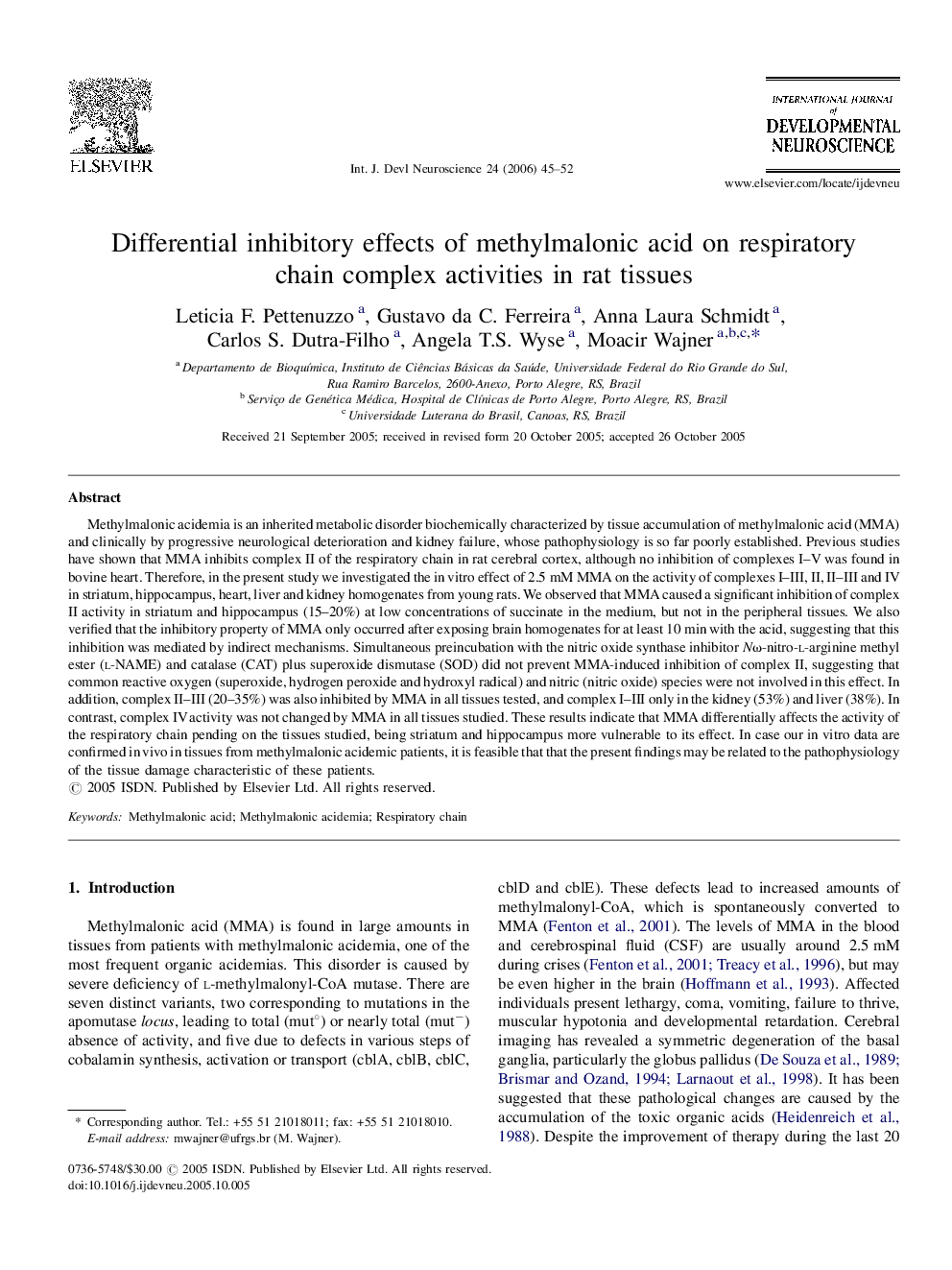| Article ID | Journal | Published Year | Pages | File Type |
|---|---|---|---|---|
| 2787203 | International Journal of Developmental Neuroscience | 2006 | 8 Pages |
Methylmalonic acidemia is an inherited metabolic disorder biochemically characterized by tissue accumulation of methylmalonic acid (MMA) and clinically by progressive neurological deterioration and kidney failure, whose pathophysiology is so far poorly established. Previous studies have shown that MMA inhibits complex II of the respiratory chain in rat cerebral cortex, although no inhibition of complexes I–V was found in bovine heart. Therefore, in the present study we investigated the in vitro effect of 2.5 mM MMA on the activity of complexes I–III, II, II–III and IV in striatum, hippocampus, heart, liver and kidney homogenates from young rats. We observed that MMA caused a significant inhibition of complex II activity in striatum and hippocampus (15–20%) at low concentrations of succinate in the medium, but not in the peripheral tissues. We also verified that the inhibitory property of MMA only occurred after exposing brain homogenates for at least 10 min with the acid, suggesting that this inhibition was mediated by indirect mechanisms. Simultaneous preincubation with the nitric oxide synthase inhibitor Nω-nitro-l-arginine methyl ester (l-NAME) and catalase (CAT) plus superoxide dismutase (SOD) did not prevent MMA-induced inhibition of complex II, suggesting that common reactive oxygen (superoxide, hydrogen peroxide and hydroxyl radical) and nitric (nitric oxide) species were not involved in this effect. In addition, complex II–III (20–35%) was also inhibited by MMA in all tissues tested, and complex I–III only in the kidney (53%) and liver (38%). In contrast, complex IV activity was not changed by MMA in all tissues studied. These results indicate that MMA differentially affects the activity of the respiratory chain pending on the tissues studied, being striatum and hippocampus more vulnerable to its effect. In case our in vitro data are confirmed in vivo in tissues from methylmalonic acidemic patients, it is feasible that that the present findings may be related to the pathophysiology of the tissue damage characteristic of these patients.
